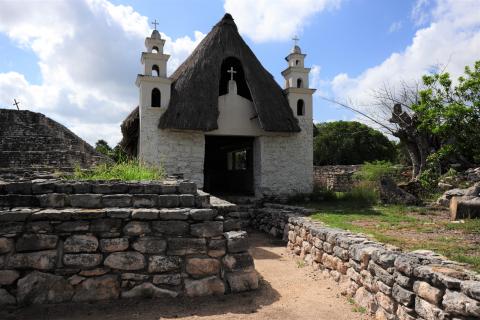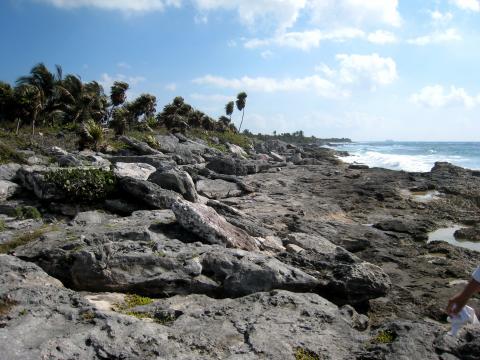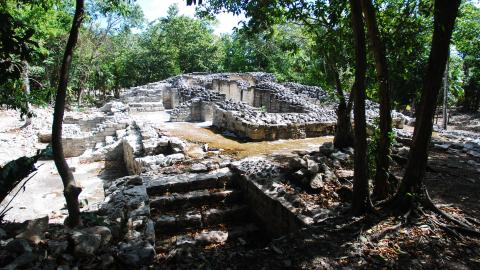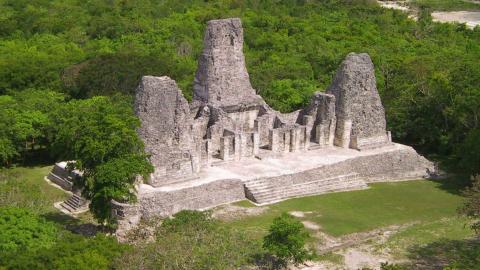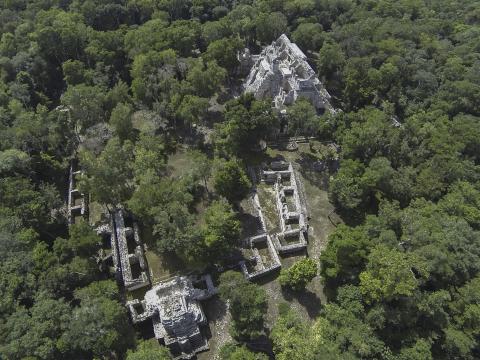
View PDFMostrando 121 - 132 de 134
Región cultural Maya
Xcambó
The inhabitants of Xcambó settled in a petén, the largest in the region, with numerous useful features: soil, drinking water and materials for their buildings. The site was erected as a commercial port during the Early Classic period (c. 350-550 AD).
Xcambó
The inhabitants of Xcambó settled in a petén, the largest in the region, with numerous useful features: soil, drinking water and materials for their buildings. The site was erected as a commercial port during the Early Classic period (c. 350-550 AD).
Xcaret
Pre-Hispanic port of departure to Cozumel for numerous pilgrims headed for the sanctuary of the goddess Ixchel, as well as a very important Maya trading city whose inhabitants navigated the Caribbean coast as far as Honduras. Its monuments are in the unique coastal style with large platforms and…
Xcaret
Pre-Hispanic port of departure to Cozumel for numerous pilgrims headed for the sanctuary of the goddess Ixchel, as well as a very important Maya trading city whose inhabitants navigated the Caribbean coast as far as Honduras. Its monuments are in the unique coastal style with large platforms and…
Xelhá
Crucial maritime port for the Maya Caribbean, possibly serving the great kingdom of Coba 1400 years ago. Impressive structures remain, such as the Building of the Birds, with its outstanding mural paintings. This and other vestiges reveal the influence of Teotihuacan.
Xelhá
Crucial maritime port for the Maya Caribbean, possibly serving the great kingdom of Coba 1400 years ago. Impressive structures remain, such as the Building of the Birds, with its outstanding mural paintings. This and other vestiges reveal the influence of Teotihuacan.
Xlapak
Twelve and a half centuries ago, the city of Xlapak supplied the Puuc region with agricultural products from land that was very fertile but lacked rivers. Medium-sized buildings are still standing, most notably The Palace, which is finely decorated with stucco facade masks of Chaac the rain god…
Xlapak
Twelve and a half centuries ago, the city of Xlapak supplied the Puuc region with agricultural products from land that was very fertile but lacked rivers. Medium-sized buildings are still standing, most notably The Palace, which is finely decorated with stucco facade masks of Chaac the rain god…
Xpuhil
Monstrous serpent jaws are depicted at the entrance to the temples. This is associated with the Río Bec style, in which the horizontal takes precedence together with pairs of high, narrow towers crowned with small temples. The three towers in the Building of the Towers have been standing for…
Xpuhil
Monstrous serpent jaws are depicted at the entrance to the temples. This is associated with the Río Bec style, in which the horizontal takes precedence together with pairs of high, narrow towers crowned with small temples. The three towers in the Building of the Towers have been standing for…
Xtampak
A preeminent Maya city, the capital of the Chenes for 850 years, it began to decline a millennium ago. Its monumental architecture, sculpture and pottery are incomparable in the region. Jade, obsidian and salt were brought here from Guatemala, central Mexico and the Yucatan peninsula.
Xtampak
A preeminent Maya city, the capital of the Chenes for 850 years, it began to decline a millennium ago. Its monumental architecture, sculpture and pottery are incomparable in the region. Jade, obsidian and salt were brought here from Guatemala, central Mexico and the Yucatan peninsula.

